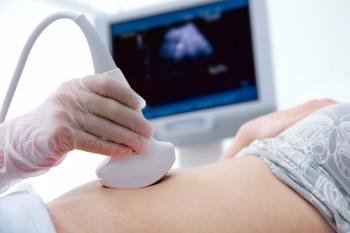Changes in maternal mortality surveillance have led to an increased maternal mortality rate in the United States, according to a recent study published in the American Journal of Obstetrics & Gynecology.
Takeaways
- Implementation of maternal death checkboxes on death certificates led to a significant increase in reported maternal mortality rates from 2003 to 2017 in the United States.
- Despite the surveillance changes, doubts have been raised about the accuracy of maternal mortality estimates because of errors in recording pregnancy status at the time of death, potentially leading to underestimated figures.
- Despite efforts to address accuracy issues, maternal mortality rates continued to rise in the US from 2018 to 2021, indicating persistent challenges in accurately tracking and addressing maternal health outcomes.
- While overall rates increased, there were variations among demographic groups, with increases observed among non-Hispanic White women and decreases among non-Hispanic Black women.
- The study identified various causes contributing to maternal deaths, including hypertensive diseases, COVID-19, and malignant neoplasms, emphasizing the multifaceted nature of maternal mortality and the importance of comprehensive surveillance and intervention strategies.
While US maternal mortality rates have continued to rise, doubts about the accuracy of maternal mortality estimates have arisen. Pregnancy status at the time of death may be overlooked, leading to an underestimated measure even in countries with good vital registration systems.
In 2003, the National Center for Health Statistics (NCHS) recommended including a pregnancy checkbox on death certificates. This has significantly increased reported maternal mortality rates from 2003 to 2017, but data has indicated severe errors involving the checkbox, including hundreds of patients aged 70 years or older being marked as pregnant during death.
While the NCHS recommended restricted use of the pregnancy checkbox to reduce these errors, the maternal mortality rate has continued to rise in the United States from 2018 to 2021. This indicates a need to determine factors impacting the high and rising rates of US maternal mortality.
To quantify rates and temporal trends in maternal and pregnancy-associated deaths in the United States, investigators conducted a descriptive study. NCHS mortality and natality files were assessed for data on deaths between 1999 and 2021.
Following the addition of the maternal death checkbox in 2003, an International Classification of Diseases, 10th Revision (ICD-10) Pregnancy Chapter O code was registered for maternal death. From 2018 onwards, only women aged 18 to 44 years with a positive pregnancy checkbox had an identified maternal death.
While all years with ICD-10 codes used for the cause of death were included in the analysis, most temporal contrasts were limited to 1999 to 2002 vs 2018 to 2021. Women aged 15 to 44 years at the start of each period were considered the rate denominator when measuring the frequency of each major cause-of-death category.
Deaths were classified based on NCHS categories and included direct obstetrical deaths, indirect obstetrical deaths, late maternal deaths, pregnancy-associated deaths, and other nonmaternal deaths. During the analysis, changes in maternal deaths and temporal trends in case fatality rates were evaluated.
Deaths during the study period were classified as maternal death if pregnancy was mentioned during the cause of death without the underlying cause being linked to a transport accident, other accidental injury, assault, or self-harm.
From 1999 to 2002, there were 3528.1 deaths per million women reported, vs 4001.5 per million from 2018 to 2021. An increase in death rates was observed among non-Hispanic White women, while a decrease was observed among non-Hispanic Black women.
While deaths from accidental injury, self-harm, or assault increased, rates of other cause-of-death categories significantly lowered. For maternal deaths, an increase from 9.65 per 100,000 live births to 23.6 per 100,000 live births occurred between the 1999 to 2002 and 2018 to 2021 periods.
Late maternal deaths increased from 0.39 to 10.6 per 100,000 live births between the 1999 to 2002 and 2018 to 2021 periods, with significant rises observed across all racial and ethnic groups. Additionally, a 29-fold increase was observed in deaths from hypertensive disease vs preexisting hypertension in pregnancy from 2018 to 2022.
Increases were also identified for direct obstetrical deaths and indirect obstetrical deaths, from 8.41 and 1.24 deaths, respectively, per 100,000 live births in 1999 to 2002 to 14.1 and 9.41, respectively in 2018 to 2021. Of direct and indirect obstetrical deaths, 38% and 87%, respectively, were identified from a positive pregnancy checkbox, as well as 82% of late maternal deaths.
Nonpregnancy-related causes of death among maternal deaths were also reported. Five hundred maternal deaths and 155 late maternal deaths were linked to COVID-19 between 2018 and 2021. A 46-fold increase of maternal deaths with malignant neoplasms was reported between the 1999 to 2002 and 2018 to 2021 periods.
When requiring maternal and late maternal deaths to mention pregnancy as at least 1 cause of death, the maternal mortality rate in the United States was 10.2 per 100,000 live births from 1999 to 2002 and 10.4 per 100,000 live births from 2018 to 2021. This indicated a 2% increase.
While indirect obstetrical deaths increased by 46% between the 2 periods, direct obstetrical deaths decreased by 17%. Late maternal deaths increased by 329%.
Declines in hypertensive disorders of pregnancy and complications of labor, delivery, and the puerperium were observed, while increases were seen for deaths from fetal complications, circulatory system diseases, and unspecified causes.
These results indicated improved accuracy of maternal death rates in the United States when requiring the mention of pregnancy among the multiple causes of death. Investigators concluded this method can, “serve as the evidentiary basis for clinical and public health initiatives.”
Reference
Joseph KS, Lisonkova S, Boutin A, et al. Maternal mortality in the United States: are the high and rising rates due to changes in obstetrical factors, maternal medical conditions, or maternal mortality surveillance? Am J Obstet Gynecol. 2024;230:440.e1-13. doi:10.1016/j.ajog.2023.12.038

















